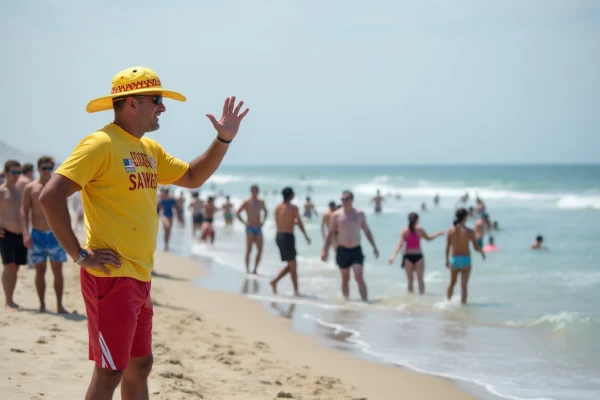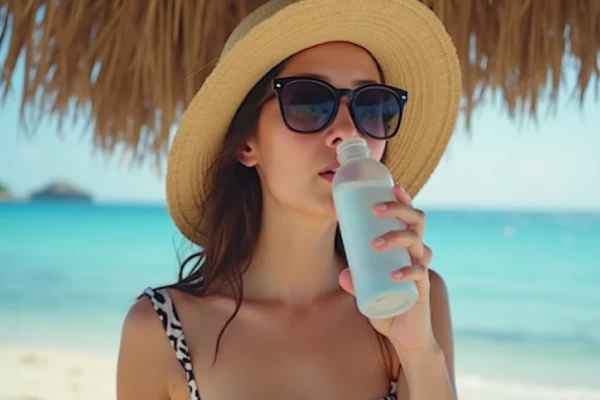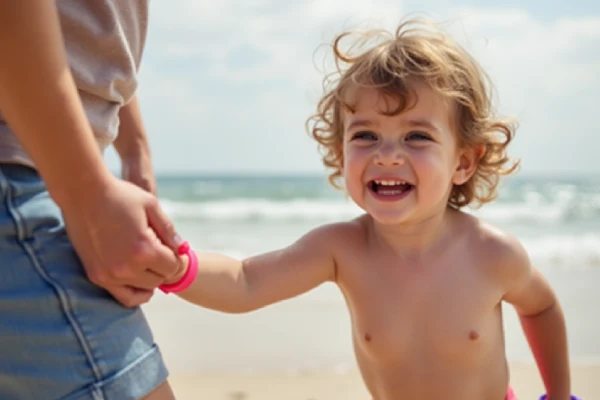The beach is one of the best places to relax, enjoy nature, and create lifelong memories. But while the sun, sand, and surf are fun, they can also pose risks if you’re not prepared. Staying safe at the beach ensures your day by the shore remains stress-free and enjoyable. This guide on beach safety tips covers everything you need to know about staying safe, from sun protection to water safety, and even how to handle encounters with marine life.
Table Of Contents
Table of Contents
Preparing for a Safe Beach Trip with Essential Beach Safety Tips
Check the Weather and Tides Before You Go
Before you head for the beaches, make sure you are aware of the weather forecast as well as the tide times. An abrupt shift in the weather, such as severe winds or a storm can transform a peaceful day into a dangerous one. The tide can also affect beach conditions and therefore it is recommended to go during low tide when more of the beach areas are exposed.
Packing Essentials for Beach Safety
It is essential to pack smartly for beach security. Some essentials to include:
- Sunscreen, Hats as well as UV protection: Choose a sunscreen that has SPF 30 or more and apply it every two hours. Wear sunglasses, hats, and UV-protective clothes to minimize sunburn.
- The First Aid Kit as well as Hydration Equipment: A compact first aid kit that includes antiseptic bandages, wipes, and sting relief creams could be life-saving. Always make sure yo
Understanding Local Beach Rules and Guidelines
Every beach has its own set of rules, often displayed at the entrance. These may include restrictions on swimming areas, pets, or littering. Respect these guidelines to ensure your safety and preserve the environment.
Discover great ideas like Beach Packing Essentials.
Sun Protection Strategies
Why Sun Safety Matters
Prolonged exposure to the sun can cause painful sunburns and increase your risk of skin cancer. Sun protection is vital for everyone, regardless of age or skin type.
Choosing the Right Sunscreen
Look for broad-spectrum sunscreens that protect against both UVA and UVB rays. A waterproof formula is ideal if you plan to swim. Apply generously 15 minutes before sun exposure for the best protection.
Additional Ways to Protect Your Skin
- Sit under a beach umbrella or in shaded areas during peak sun hours (10 a.m. to 4 p.m.).
- Wear lightweight, long-sleeved shirts and pants for extra coverage.
Water Safety Tips

Understanding Rip Currents and How to Avoid Them
Rip currents are one of the biggest dangers at the beach. They are powerful, narrow channels of fast-moving water that can pull swimmers away from the shore. Always swim in areas monitored by lifeguards, and if caught in a rip current, swim parallel to the shore to escape its grip.
Swimming in Designated Areas
Lifeguards mark safe swimming zones using colored flags. These areas are free from hazards like strong currents or marine life. Stick to these zones for a safer experience.
Life Jackets and Flotation Devices
If you’re not a strong swimmer, wear a Coast Guard-approved life jacket. Avoid relying solely on inflatables, as they can deflate or drift away.
Explore family-friendly beach destinations with safety in mind by checking out Family-Friendly Beach Destinations.
Staying Safe Around Marine Life
Identifying Dangerous Marine Animals
Marine life, while fascinating, can pose risks. Learn to identify jellyfish, stingrays, and other potentially harmful creatures common in the area you’re visiting.
Steps to Take in Case of a Marine Bite or Sting
- For jellyfish stings: Rinse the area with vinegar or salt water. Avoid using fresh water, as it can activate more stingers.
- For stingray injuries: Immerse the wound in hot water to ease the pain and seek medical attention promptly.
Respecting Local Marine Ecosystems
Avoid touching coral reefs, starfish, or other marine animals. Not only can it harm the ecosystem, but some marine life may sting or bite in self-defense.
Hydration and Heat Safety

Recognizing Signs of Heatstroke
Heatstroke is a serious condition caused by overheating. Symptoms include nausea, rapid heartbeat, and confusion. If you or someone else shows these signs, move to a cool area immediately and hydrate.
The Importance of Drinking Water
Staying hydrated prevents heat-related illnesses. Bring reusable water bottles and take regular sips throughout the day.
Finding Shade and Staying Cool
Pack a beach umbrella or sunshade to create a cooler spot for relaxing. Light, breathable clothing can also help you stay comfortable under the sun.
Safety for Families with Kids: Essential Beach Safety Tips for Parents

Beach Safety Tips for Young Children
Keep young kids within arm’s reach when they’re near the water. Consider using a playpen or shaded tent for toddlers to stay safe and cool on the sand.
Using Wristbands or Identification
Write your phone number on a waterproof wristband for your child to wear. This makes it easier for someone to contact you if they wander off.
Teaching Kids Basic Beach Safety Rules
Teach children to always ask an adult before going into the water and to recognize lifeguards as trusted helpers. Role-playing potential scenarios can reinforce these lessons effectively.
Nighttime Beach Safety
Dangers of Swimming at Night
Swimming after dark is risky because of limited visibility. Hazards like rip currents, sharp objects, or marine life are harder to spot in low light.
How to Stay Visible After Dark
If you’re walking along the beach at night, wear reflective clothing and carry a flashlight. Glow sticks can be a fun and practical safety tool for kids.
Avoiding Remote or Isolated Beaches
Stick to popular, well-lit beaches after dark. Avoid secluded areas where help may not be readily available in case of an emergency.
Beach Safety FAQs
What should I pack for a safe day at the beach?
Pack sunscreen, water, a first aid kit, and UV-protective clothing. Don’t forget snacks, a beach umbrella, and sand toys for the kids.
How can I protect myself from rip currents?
Always swim in lifeguard-designated areas and learn to identify signs of rip currents, such as discolored water and foam moving away from the shore.
What are the signs of heat exhaustion?
Heat exhaustion symptoms include heavy sweating, muscle cramps, and dizziness. Move to shade and hydrate if these symptoms occur.
Are there any safety tips for families with kids?
Always supervise children, use wristbands for identification, and teach basic safety rules. Set a designated meeting point in case anyone gets separated.
How can I stay safe around marine life?
Stay aware of marine animals in the area and avoid touching coral reefs or unfamiliar creatures. Treat bites or stings promptly.
What should I do if I get stung by a jellyfish?
Rinse the sting with vinegar or salt water, remove tentacles with tweezers, and avoid rubbing the area.
Conclusion and Final Tips
Beach safety is about being aware and prepared for the surroundings. From shielding yourself from sunburn to being secure in the ocean, these suggestions guarantee you an enjoyable and secure time on the beach. Remember that the most important thing to have a successful day at the beach is balancing enjoyment with responsibility.


